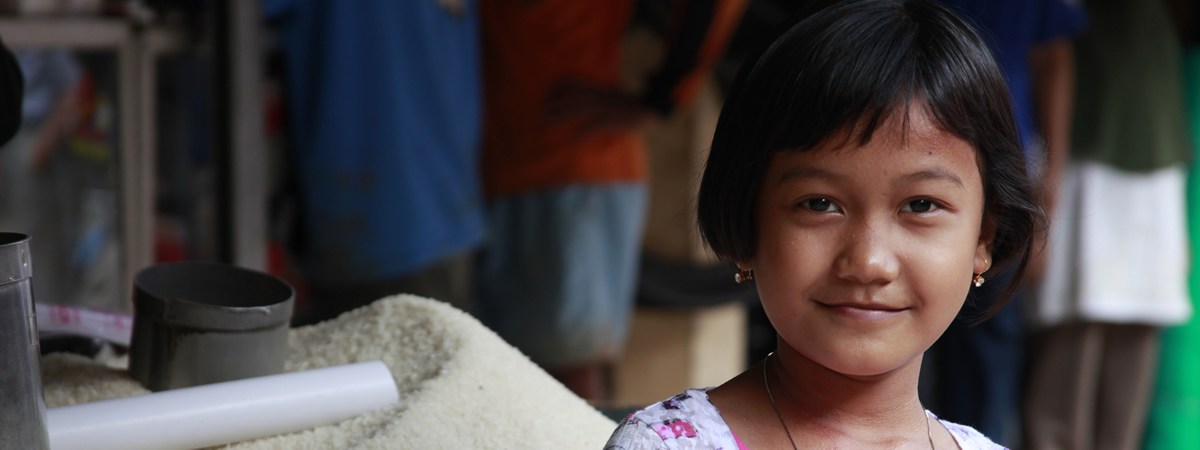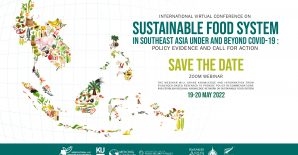News and Analysis
Traditional wheat varieties of Tajikistan, Turkey, and Uzbekistan are subject of research
(Asia-Plus, 01 Feb 2016) As farmers increasingly plant modern varieties of wheat, traditional wheat landraces are in decline. Yet the genetic diversity found in these hardy traditional varieties could be crucial for the future of wheat production. A new series of publications from FAO introduces wheat landraces in the Central Asia subregion, starting with Tajikistan, Turkey and Uzbekistan. The experts visited farms across the three countries, talked with farmers, and surveyed the wheat varieties being grown. The publications unravel an elaborate list of local wheat varieties with detailed information about where, why, how and under what conditions farmers continue to grow them. The research also delves into the trends that affect cultivation of local varieties – from socio-economic, geographic and agronomic perspectives. Also included is a set of recommendations for decision-makers for preserving genetic diversity.
Marketers hold rally at White House in Bishkek
(24 News Agency, 01 Feb 2016) Marketers hold a rally at the White House in Bishkek. About 50 people, who hold banners with appeals to the President and the Prime Minister of the country, have gathered in front of the building demanding a fair decision of the authorities on the territory nearby Chinar market (Alamedin-1 microdistrict) on Auezov Street, where they were engaged in wholesale and retail trade. "We had more than a hundred stands there, all of the marketers have permits, we acquired licenses, paid all the taxes, but at the beginning of this year we were forbidden to stand there and were not given another place," protesters said.
EBRD supports efficient electricity generation in Atyrau, Kazakhstan
(EBRD News) he European Bank for Reconstruction and Development (EBRD) is continuing to support the Green Economy drive in Kazakhstan by financing a new, cleaner and more energy-efficient gas-fired electricity generating plant in Atyrau, a harbour city on the Caspian Sea and a regional capital in western Kazakhstan. The EBRD is providing a five-year loan in the local currency, tenge, for the equivalent of $5.9 million to Sagat Energy, a private company registered in Kazakhstan. The loan will finance the remaining construction works and the connection to the power transmission grid, as well as the commissioning and launch of the commercial operation of a modern gas engine-based 11MW combined heat and power plant in the city of Atyrau in western Kazakhstan. Kazakhstan is still largely dependent on coal for electricity production but the Atyrau oblast is one of only a few regions where the domestic gas supply is also available for power generation. Gas is significantly cleaner than coal in terms of CO2 emissions.
Economy of Kyrgyzstan is “mostly unfree”
(24 News Agency, 01 Feb 2016) Economy of Kyrgyzstan was found "mostly unfree." This is stated in the updated list of indicators of Economic Freedom Index, which is annually calculated by the American Research Center Heritage Foundation. As noted, Kyrgyzstan took 96th place with 59.6 points. A "significant success" in the development of free trade is noted, but the right of ownership, corruption and financial freedom cause concern. In 2015 the Kyrgyz Republic took 82nd place with 61.3 points.
European Union allocates € 15 mln to Kyrgyzstan to support economic development
(24 News Agency, 28 Jan 2016) European Union allocates € 15 million to Kyrgyzstan to support economic development. EU representation office in the Kyrgyz Republic reported.
According to it, the European Commission has approved the allocation of money within the Macro-Financial Assistance (MFA) program of the EU. The payment includes € 5 million in form of grant and €10 million- loan. Tranche is the last part of MFA. "Macro-financial assistance, provided by the European Union, helps Kyrgyzstan in solving problems related to the difficult economic situation in the region," the European Commissioner for Economic and Financial Affairs, Taxation and Customs Pierre Moscovici said.
Uzbekistan, Russia discuss issues of expanding supply of agriculture products
(UzDaily, 27 Jan 2016) Uzbekistan and Russian discussed issues of increasing imports of Uzbek agriculture products, the press service of the Ministry of Agriculture of Russia said. According to the Ministry, Director of Department of International Cooperation of the Ministry of Agriculture of Russia Artem Tsinamdzgvrishvili held talks with the officials of the Embassy of Uzbekistan in Russia. At the meeting, it was noted that Uzbekistan has great agriculture potential and produces large number of fruits and vegetables. Uzbekistan can satisfy internal demand and supply products to the Russian market. The sides underlined positive trend in development of supplies of agriculture products from Uzbekistan to Russia, which grew by 10.6% year-on-year in 2015.
Uzbekistan, UK implement project “Research is Great”
(UzDaily, 26 Jan 2016) The British Council Uzbekistan in partnership with Iste’dod Fund, Ministry of Higher and Secondary Specialized Education of Uzbekistan and the British Embassy is implementing a project named “Research is Great” aimed at promoting UK-Uzbekistan collaboration on research, development of new approaches to planning and conducting research projects, establishment of sustainable research partnerships between higher education institutions, agencies and think tanks in the UK and Uzbekistan.
Publications
Rangelands of Central Asia: challenges and opportunities. A. Mirzabaev, M. Ahmed, J. Werner, J. Pender and M. Louhaichi. 2016. Rangelands of Central Asia: Challenges and Opportunities. Journal of Arid Land, Volume 8, Issue 1, pp 93-108. Abstract: Rangelands of Central Asia (referring to Kazakhstan, Kyrgyzstan, Tajikistan, Turkmenistan and Uzbekistan in this study), the largest contiguous area of grazed land in the world, serve as an important source of livelihood for pastoral and agro-pastoral communities in this region. They also play an important role in absorbing CO2 as a global carbon sink. However, unsustainable management of rangelands has led to their degradation hugely by downgrading their potential agro-ecological, environmental and socio-economical roles. This paper reviewed the rangeland degradation in Central Asia, a topic which so far has received only scant coverage in the international scientific literature. It also provided examples of successful experiences and outlined possible options that land managers can adopt to enhance the sustainable management of these vast degraded rangelands. The experiences and lessons described in this paper may also be relevant for other degraded rangeland areas, especially in the developing countries. The causes of rangeland degradation within the Central Asian region are numerous, complex and inter-related. Therefore, while addressing the factors associated with improper rangeland management may shed some light on the causes of rangeland degradation, the scope of this paper would not be all-encompassing for the major causes of degradation. There is a need to develop and widely apply the viable and locally accepted and adapted packages of technical, institutional and policy options for sustainable rangeland management. Incentivizing the collective action of small-scale pastoralists who group together to facilitate access to remote pastures can reduce the degree of overgrazing within community pastures, such as those near the settlements. We also found that migratory grazing through pooling of resources among small-scale pastoralists can increase household income. After their independence, most Central Asian countries adopted various rangeland tenure arrangements. However, the building of enhanced capacities of pasture management and effective local rangeland governance structures can increase the likelihood, which will be sustainable and equitable. Finally, this paper presented several promising technical options, aiming at reversing the trend of rangeland degradation in Central Asia.
Statistical study to identify the key factors governing ground water recharge in the watersheds of the arid Central Asia. B.Q. Zhu and Y.L. Wang. 2016. Statistical study to identify the key factors governing ground water recharge in the watersheds of the arid Central Asia. Environ Monit Assess. 2016 Jan;188(1):66. Abstract: Understanding the source and recharge of ground waters is of great significance to our knowledge in hydrological cycles in arid environments over the world. Northern Xinjiang in northwestern China is a significant repository of information relating to the hydrological evolution and climatic changes in central Asia. In this study, two multivariate statistical techniques, hierarchical cluster analysis (HCA) and principal component analysis (PCA), were used to assess the ground water recharge and its governing factors, with the principal idea of exploring the above techniques to utilize all available hydrogeochemical variables in the quality assessment, which are not considered in the conventional techniques like Stiff and Piper diagrams. Q-mode HCA and R-mode PCA were combined to partition the water samples into seven major water clusters (C1-C7) and three principal components (PC1-PC3, PC1 salinity, PC2 hydroclimate, PC3 contaminant). The water samples C1 + C4 were classified as recharge area waters (Ca-HCO3 water), C2 + C3 as transitional zone waters (Ca-Mg-HCO3-SO4 water), and C5 + C6 + C7 as discharge area waters (Na-SO4 water). Based on the Q-mode PCA scores, three groups of geochemical processes influencing recharge regimes were identified: geogenic (i.e., caused by natural geochemical processes), geomorphoclimatic (caused by topography and climate), and anthropogenic (caused by ground water contamination). It is proposed that differences in recharge mechanism and ground water evolution, and possible bedrock composition difference, are responsible for the chemical genesis of these waters. These will continue to influence the geochemistry of the northern Xinjiang drainage system for a long time due to its steady tectonics and arid climate. This study proved that the chemistry differentiation of ground water can effectively support the identification of ground water recharge and evolution patterns.




Leave a Reply